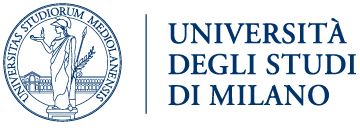Multitemporal monitoring of plant area index in the Valencia rice district with PocketLAI.
 |
2016 - Remote Sensing, 8, 202-17 |
 |
Campos-Taberner, M., García-Haro, J., Confalonieri, R., Martínez, B., Moreno, Á., Sánchez-Ruiz, S., Gilabert, M.A., Camacho, F., Boschetti, M., Busetto, L. |
Abstract:
Leaf area index (LAI) is a key biophysical parameter used to determine foliage cover and crop growth in environmental studies in order to assess crop yield. Frequently, plant canopy analyzers (LAI-2000) and digital cameras for hemispherical photography (DHP) are used for indirect effective plant area index (PAIeff) estimates. Nevertheless, these instruments are expensive and have the disadvantages of low portability and maintenance. Recently, a smartphone app called PocketLAI was presented and tested for acquiring PAIeff measurements. It was used during an
entire rice season for indirect PAIeff estimations and for deriving reference high-resolution PAIeff maps. Ground PAIeff values acquired with PocketLAI, LAI-2000, and DHP were well correlated (R2 = 0.95, RMSE = 0.21 m2/m2 for Licor-2000, and R2 = 0.94, RMSE = 0.6 m2/m2 for DHP). Complementary data such as phenology and leaf chlorophyll content were acquired to complement seasonal rice plant information provided by PAIeff. High-resolution PAIeff maps, which can be used for the validation of remote sensing products, have been derived using a global transfer function (TF) made of several measuring dates and their associated satellite radiances.
entire rice season for indirect PAIeff estimations and for deriving reference high-resolution PAIeff maps. Ground PAIeff values acquired with PocketLAI, LAI-2000, and DHP were well correlated (R2 = 0.95, RMSE = 0.21 m2/m2 for Licor-2000, and R2 = 0.94, RMSE = 0.6 m2/m2 for DHP). Complementary data such as phenology and leaf chlorophyll content were acquired to complement seasonal rice plant information provided by PAIeff. High-resolution PAIeff maps, which can be used for the validation of remote sensing products, have been derived using a global transfer function (TF) made of several measuring dates and their associated satellite radiances.
 |
Keywords: Rice, effective plant area index (PAIeff), PocketLAI, smartphone, high-resolution map |
 |
DOI: 10.3390/rs8030202 |
- Comparison of three calibration methods for modeling rice phenology
- A simple pipeline for the assessment of legacy soil datasets: An example and test with soil organic carbon from a highly variable area.
- A high-resolution, integrated system for rice yield forecasting at district level.
- Downscaling rice yield simulation at sub-field scale using remotely sensed LAI data.
- Analysis and modelling of processes involved with salt tolerance and rice.
- Estimating crop nutritional status using smart apps to support nitrogen fertilization. A case study on paddy rice.
- Development of generic crop models for simulation of multi-species plant communities in mown grasslands.
- Quantifying uncertainty due to stochastic weather generators in climate change impact studies
- Predicting rice blast disease: machine learning versus process-based models
- Boundaries and perspectives from a multi-model study on rice grain quality in Northern Italy.





